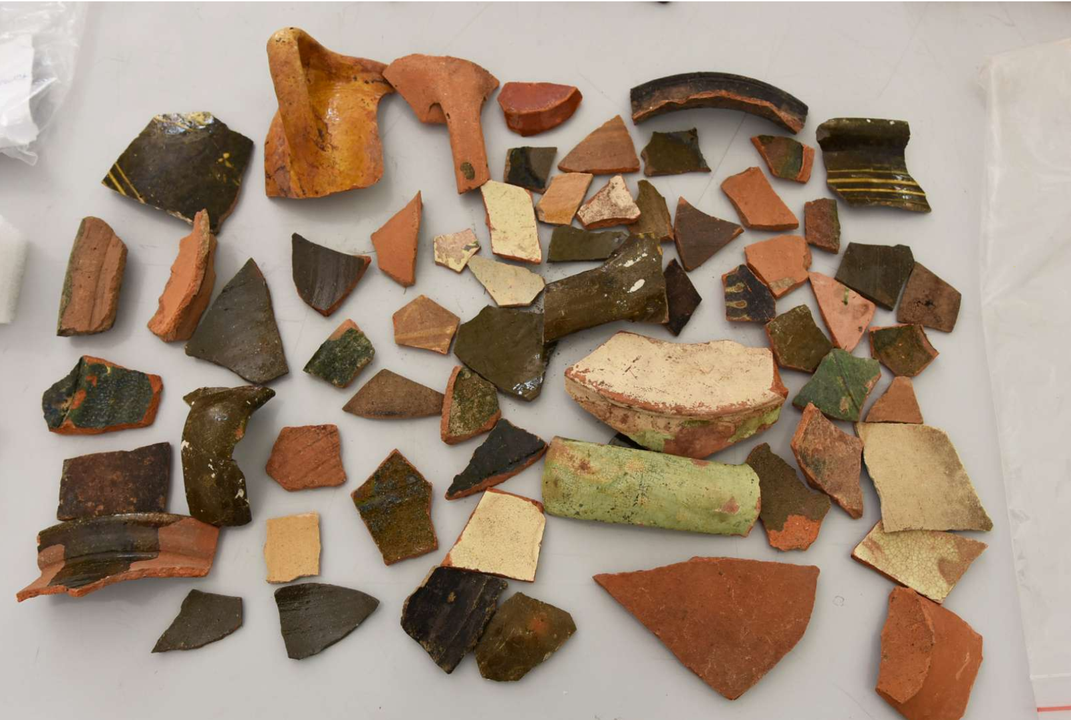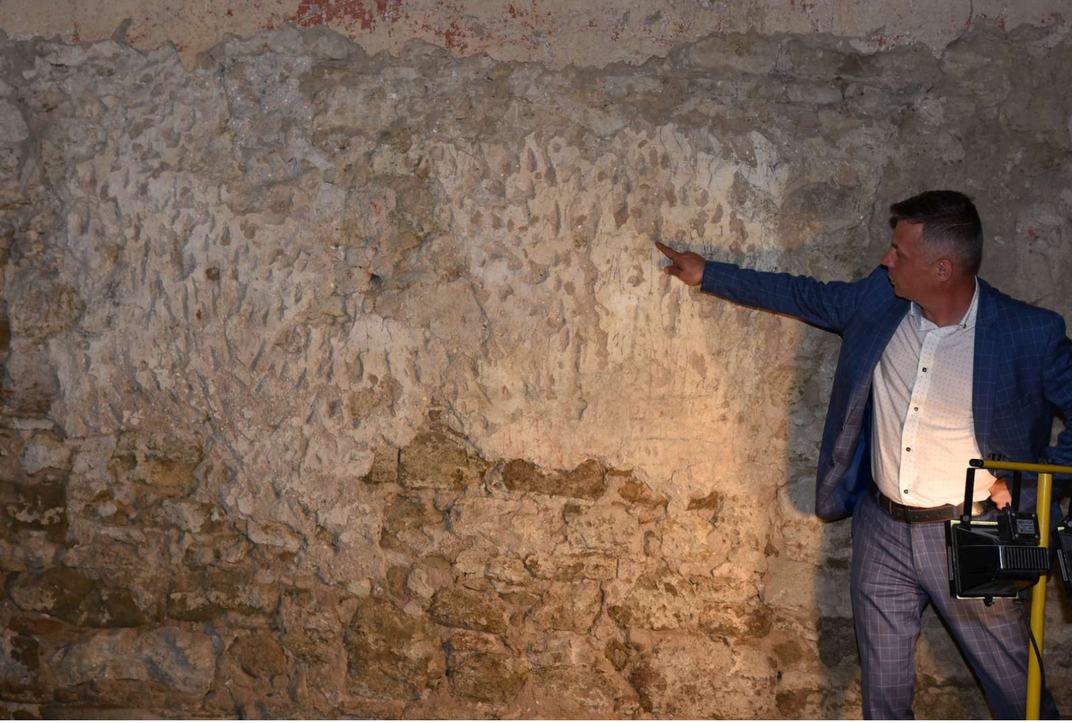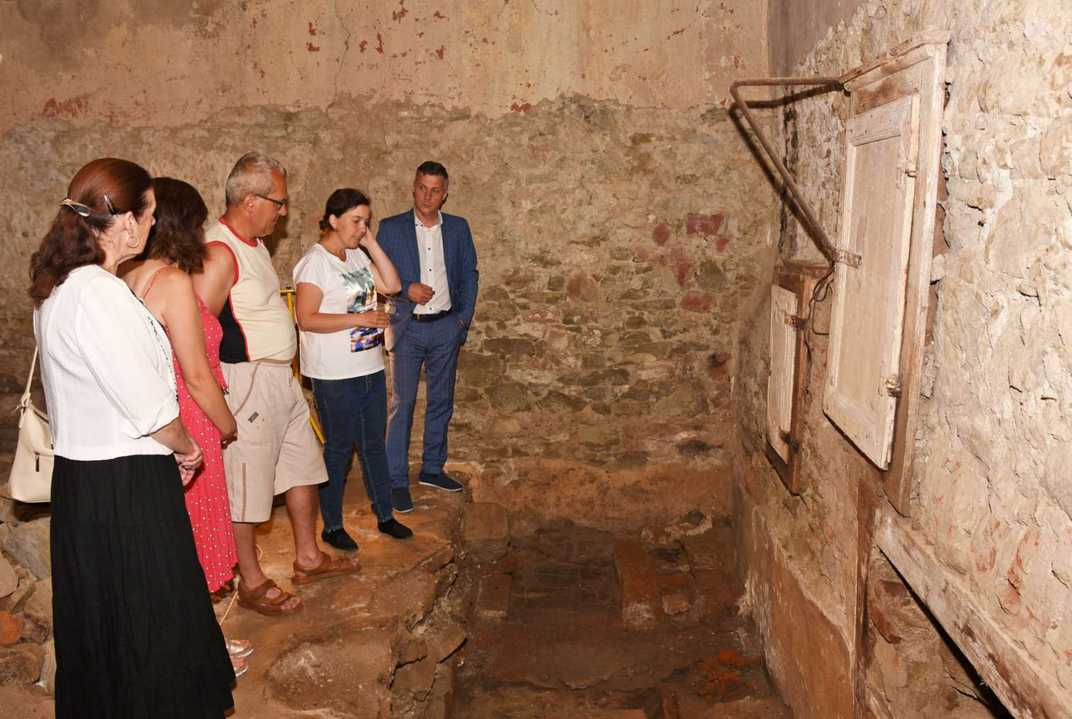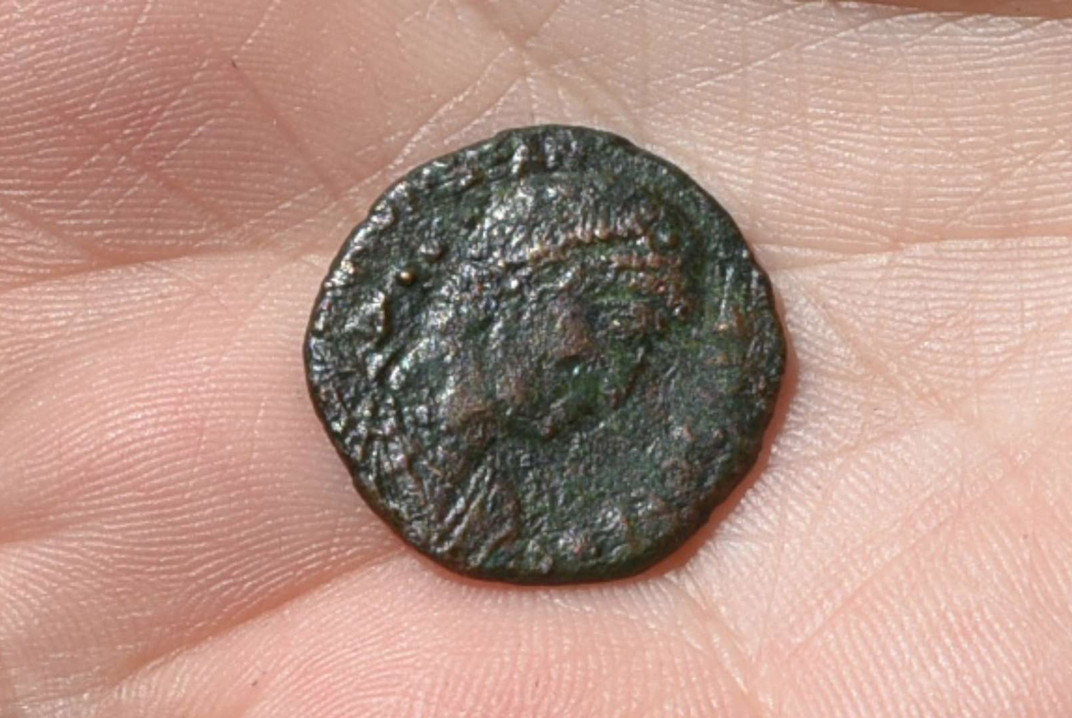Archaeologists Unearth Remnants of 18th-Century Pub in Slovakia
The team found a rare Roman coin, wall graffiti and ceramic fragments underneath the tiny village’s town hall
:focal(838x700:839x701)/https://tf-cmsv2-smithsonianmag-media.s3.amazonaws.com/filer/22/2f/222ff7bd-e719-4179-bf12-2aab3e624dad/spisske_vlachy_-_virgin_mary_assumption_church.jpg)
The first residents of Spišské Vlachy, a town of just over 3,500 people in eastern Slovakia, arrived in the fourth century A.D. Now, new archaeological finds suggest that in the centuries after the village’s founding, travelers may have congregated in a pub near its center, reports Mária Simoňáková for local news outlet Spiš Korzár.
A team of archaeologists working underneath the old town hall recently discovered evidence of a 1,600-year-old settlement and an 18th-century pub, officials announced last month.
“We tried two probes,” says Mária Hudáková, director of archaeological research, as quoted by Spiš Korzár and translated in the Slovak Spectator. “The first uncovered object is from the Roman era. … The second [probe] revealed findings connected with the construction and reconstruction of the [building].”
The oldest object discovered on-site was a rare Roman coin depicting Constantius II, who ruled between 337 and 361 A.D, according to the News Agency of the Slovak Republic (TASR). Archaeologist Matúš Hudák tells Spiš Korzár that the coin may have been placed in the building as a “building sacrifice”—a common practice meant to protect the property from harm.
As Brad Japhe reports for Forbes, the Roman coin’s presence suggests that people have lived in Spišské Vlachy since the time of the Great Migration, which took place amid the empire’s prolonged decline.
The coin also indicates that the Slavic people who settled in the region actively traded with Rome.
“It is interesting that coins made it from the west to Spiš,” Hudák tells Spiš Korzár, per the Spectactor. “How could they do trade at such distances and use coins as currency?”
In addition to Roman-era artifacts, the team uncovered evidence of a pub or inn likely used in the 18th century. Finds included parts of wooden floors, ceramic fragments, and a cellar where beer and wine were stored, reports the Spectator.
The archaeologists also discovered coins minted in Poland and Hungary, perhaps testifying to travelers booking rooms or purchasing meals on the premises. According to TASR, the coins bear engravings that reference Polish monarch Sigismund III and Holy Roman Emperor Francis II, helping the team date the currency to between the 17th and 19th century.
“We assume there was some kind of pub,” Hudák tells Spiš Korzár.
He notes that the site contains wall graffiti, some of which depicts gallows and a sword. The archaeologists also identified what may be an old oven or furnace used to heat the building.
Researchers from Museum of Spiš Territory began work on the site, which sits next to the Assumption of Mary Church, last October and concluded excavations in March. The town’s mayor, Ľubomír Fifik, tells TASR that he hopes to soon display the artifacts in a nearby museum.
/https://tf-cmsv2-smithsonianmag-media.s3.amazonaws.com/accounts/headshot/nora.png)




/https://tf-cmsv2-smithsonianmag-media.s3.amazonaws.com/accounts/headshot/nora.png)